1001 Most Useful FRENCH Words NEW EDITION Heather McCoy, Ph.D. DOVER PUBLICATIONS, INC. Mineola, New York

Copyright Copyright 2012 by Dover Publications, Inc.
Text copyright 2010 by Heather McCoy
All rights reserved. Bibliographical Note 1001 Most Useful French Words NEW EDITION , first published by Dover Publications, Inc., in 2012, is a new selection of material from 2,001 Useful French Words , published in 2010 by Dover Publications, Inc. Library of Congress Cataloging-in-Publication Data McCoy, Heather. New ed. p. cm. 1001 Most Useful French Words New Edition, first published by Dover Publications, Inc., in 2012, is a new selection of material from 2,001 Useful French Words, published in 2010 by Dover Publications, Inc.T.p. verso. verso.
Text in English and French. ISBN-13: 978-0-486-49898-0 ISBN-10: 0-486-49898-0 1. French languageVocabulary. 2. French languageUsage. 3.
French languageGrammar. I. McCoy, Heather. 2,001 most useful French words. II. III. III.
Title: One thousand and one most useful French words. PC2445.M325 2012 448.2'421dc23 2012030153 Manufactured in the United States by Courier Corporation
49898001
www.doverpublications.com
I would like to thank those who have assisted me with this project, directly and indirectly. I gratefully acknowledge Rochelle Kronzek and Janet Kopito, editors at Dover Publications, for the opportunity to create a book that allowed me to immerse myself in the glory of words; Sandrine Simon, for her careful proofreading and helpful suggestions; Bndicte Monicat, for being a stellar colleague; the students at Penn State University, who continue to teach me so much; and my husband, Gary J. Weisel, whose sense of dedication to hard work will always be a source of inspiration to me.
This book is intended for anyone who wishes to enrich his or her French vocabulary. Readers will find a review of well-known terms, as well as many new and useful words.
The structure of the book permits it to be used in a variety of ways, either alphabetically for a systematic review, or randomly, to dip in for a casual perusal. This flexibility will contribute to the books usefulness. The first section of the book contains an alphabetical listing of all 1001 words. Each word is listed in French, with the English translation immediately following. The gender of nouns is indicated as masculine (m.) or feminine (f.); plural nouns are indicated as well (pl.). Adjectives are provided in the masculine form with the feminine form indicated in parentheses.
In addition, each word is presented in a French sentence for context, followed by the English translation. The second part of the book contains a Categories section. Here you will find simple vocabulary reference lists of common words that will be useful to you when you want to describe yourself, talk about your family, communicate while traveling, and many other purposes. These are terms that you have likely learned beforemost of them are straightforward enough that contextual information isnt provided. A word about context: One of the most important tools we have for discerning meaning in language is context. This is true for our native language, as well as for languages we learn as non-native speakers.
You might not know what the word punctilious means in English, but when you see the sentence I can think of no better way to describe Margaret than punctiliousshe shows the highest regard for correct behavior, and proper etiquette is always her primary concern, the meaning of punctilious will be clear. You can figure out from the context that punctilious likely means socially correct and mindful of good manners and conventions. A word can also mean very different things depending on the words around it. The sentences This sweater is green and My cousin is interested in green technologies use the word green in different ways, and it is the rest of the sentence that makes the intended meaning evident. In this book we are limited to contextual clues at the sentence level, but in the world beyond this book, contextual clues reach far beyond the sentence. Elements such as the age of the speaker(s), the person who is being addressed (and by whom), the place where these words are being uttered, and even whether humor is intended, all offer potential contextual clues for meaning. Keep this in mind when you hear the words in this book being used in new or unexpected ways.
We believe that 1001 Most Useful French Words NEW EDITION will provide an eminently useful tool, however you choose to use it. Our goal is for this handy book to be an indispensable tool in your further explorations in the French language. Immerse yourself in the pleasure of the words as you read it. Bonne lecture! French Pronunciation Guide Here are some general principles of pronunciation: Nasalization In French, a vowel is nasalized when it is followed by a single m or n in the same syllable. The transcription of these nasalized vowels appears as: -an, -am, -em, -en -> ahn, ehn -in, -im -> ihn, ihm -on, -om -> ohn, ohm -um, -un -> uhn To produce a nasalized vowel, quickly pass the air through both the nose and the mouth at the same time. The m or n isnt pronounced after the nasal vowel, as follows: franais -> frahn-say ; temps -> tahn pain -> pihn ; printemps ->prihn-tehn bon -> bohn quelquun -> kell-kuhn Silent Final Consonants In French, most consonants at the end of a word are silent, although there are exceptions to this rule: c, f, and l.
The consonant r also is pronounced, but is silent when occurring in the endings -er and -ier. The French r The French r can be one of the most challenging sounds for English speakers to pronounce. Pronunciation of the r will depend upon the region of the French-speaking world that you are visiting. In some areas, the French r can resemble the Italian or Spanish r produced by rolling it on the tip of the tongue. The Parisian r is a more gutteral sound: its helpful to imagine the sound being produced in the back of the throat, the same place that produces the h in ahoy. The Plural s As mentioned above, consonants at the end of words normally are not pronounced. The Plural s As mentioned above, consonants at the end of words normally are not pronounced.
Make special note of this when pronouncing the s that denotes the plural: Le chat -> luh shah Les chats -> lay shah Notice how the pronunciation of the noun chat does not change between the singular and the plural. This is quite different from English, and is important for English speakers to remember. Liaison A final consonant that is normally silent is pronounced when it comes before a vowel or h. This phenomenon is called liaison. Note the following change: A final s before a consonant: des livres -> day leev-ruh A final s before a vowel: des animaux -> daze ehn-ee-moh The rules for liaison can be somewhat complex, so simply pay attention to the phonetic transcriptions in order to get a feel for when its usage is appropriate. 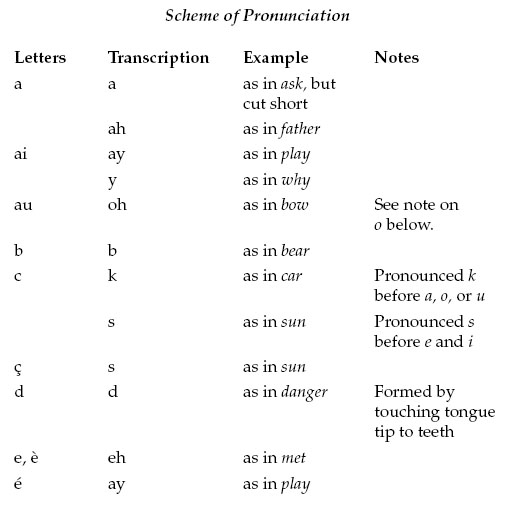
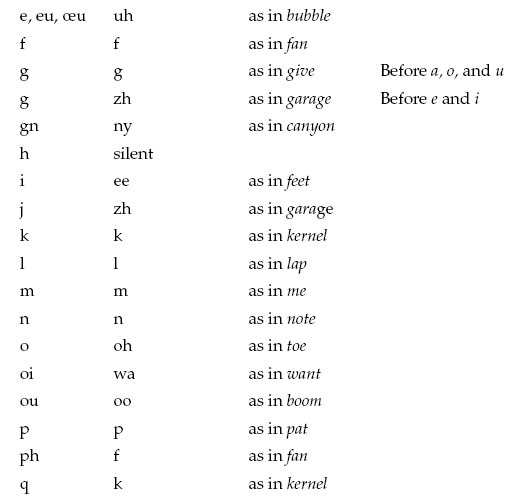
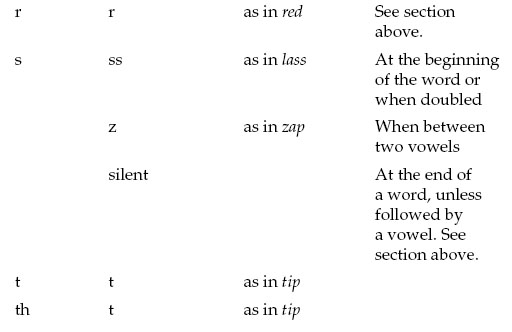
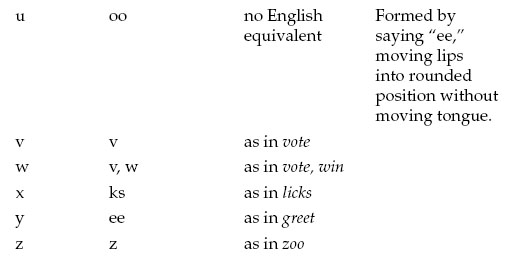



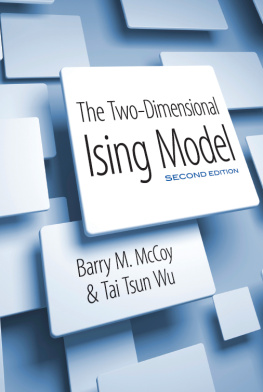










 Copyright Copyright 2012 by Dover Publications, Inc.
Copyright Copyright 2012 by Dover Publications, Inc.


